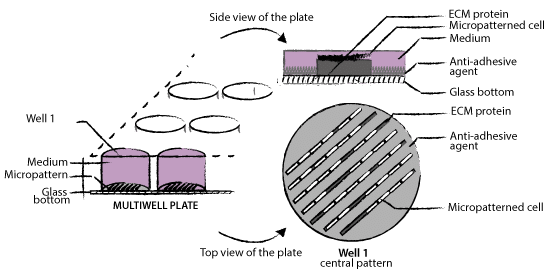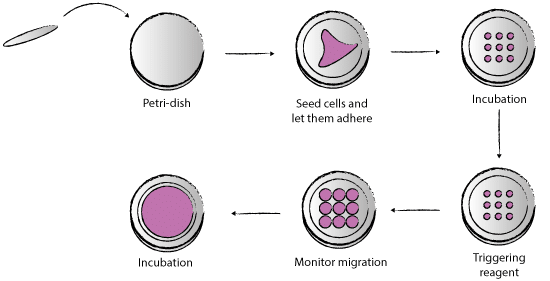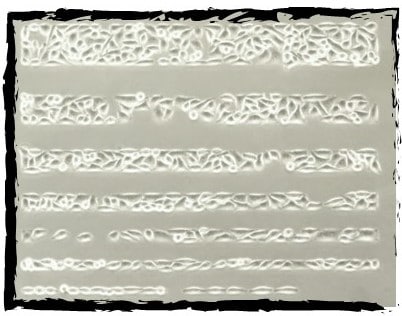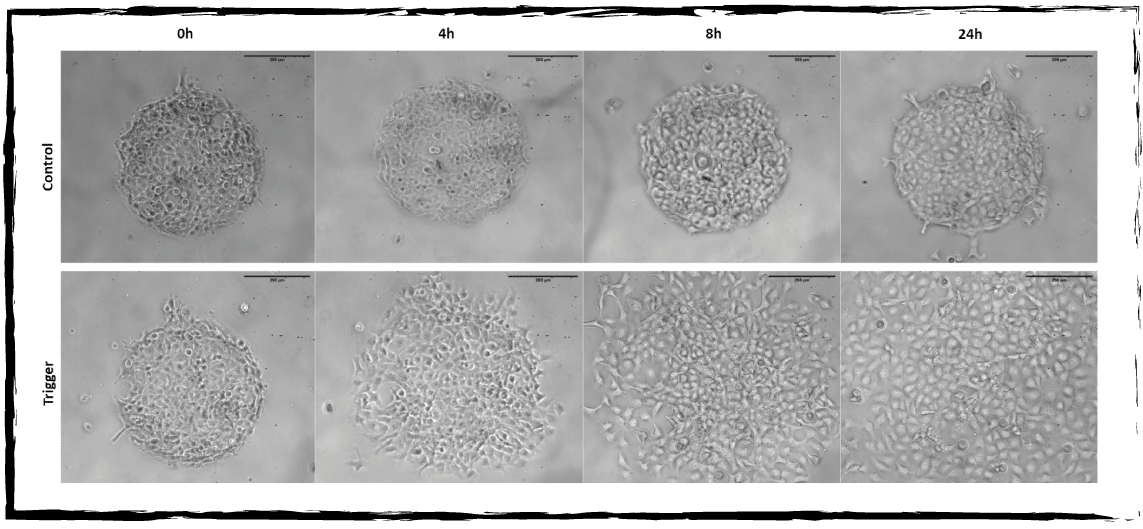Micropatterns
Control the 2D shape of your cells
Control the 2D shape of your cells
MICROPATTERN
Cells are cultured in a substrate patterned with adherent micrometer-sized domains of predefined geometric features. When cultured on this, cells adhere specifically to the patterned area, acquiring for example, the geometry of the pattern.
Cell culture supports receive a covalently bounded surface chemistry treatment with an oxidation resistance anti-adhesive polymer. Less sensitive to oxidation than a classical polymer with the same type of covalent bonding to the glass slide. After plated you can keep your cells in the patterns up to 2 weeks. Non used substrates can be stored up to 6 months.
> Different pattern shapes and dimensions (lines, squares, triangles, rectangles, grids, etc.)
> Customized shapes and dimensions
> Adaptable to any cell culture substrate (from Petri dishes to 384 well plates) – from single cell to high throughput and high content screening analysis
> Compatible with high-resolution optical microscopy systems
DYNAMIC MICROPATTERN
Dynamic Explorer combines 4Dcell’s micropatterning technology and click chemistry to induce cell migration of cells from pre-defined geometries.
Cells are seeded on a micropatterned substrate and specifically adhere to cell-adhesive regions with very high resolution. The regions around the cells are non adhesive at first but can be ‘switched on’ at any time to release the cells from their patterns.
As with standard micropatterning, it is possible to pattern the cells into customized shapes and dimensions.
> Anti-adhesive polymer
Covalent and electrostatic bonding to the glass slide, stable for up to 3 months
The polymer can be rendered adhesive by a click chemistry reaction



HeLa cells in lines of 100 to 10 µm width

Fluorescently labeled fibrinogen – Alexa Fluor 488
Explore examples of application
> Liver canliculi assay: improved hepatocytes differentiation model
> Neural network in a well: Control of neuronal connectivity
> Attached Spheroid assay: Improved manipulation and observation of spheroids
> 2D Cardiomyocyte maturation assay: Functional IPSc induced cardiomycyte fibers
> Cardiomyocyte maturation assay: Functional IPSc induced cardiomycyte fibers
> Cell migration assay: Analysis of the mechanisms occuring during the migration
> Cell polarization: Standardization of the shape and organization of the cell
> Coculture assay: Analysis of the cell-cell contact by click chemistry technology
> Frustrated phagocytosis: Characterization of the mechanism
> Lamellipodia and filopodia assay: Analyzing events occuring during membrane protrusion
> Live cell imaging: Observing cells by time-lapse microscopy
> Macrophage polarization assay: Modulation of macrophage phenotype by cell shape
> Microtuble-dependant trafficking assay: Cell confinement for cytoskeletal organization
> Organelles positioning assay: Precise statistics on organelle positioning in the cell
> Primary cilium assay: Cell shape control for ciliogenesis regulation
> Skeletal muscle cells assay: Alignment, organization and shape standardization
